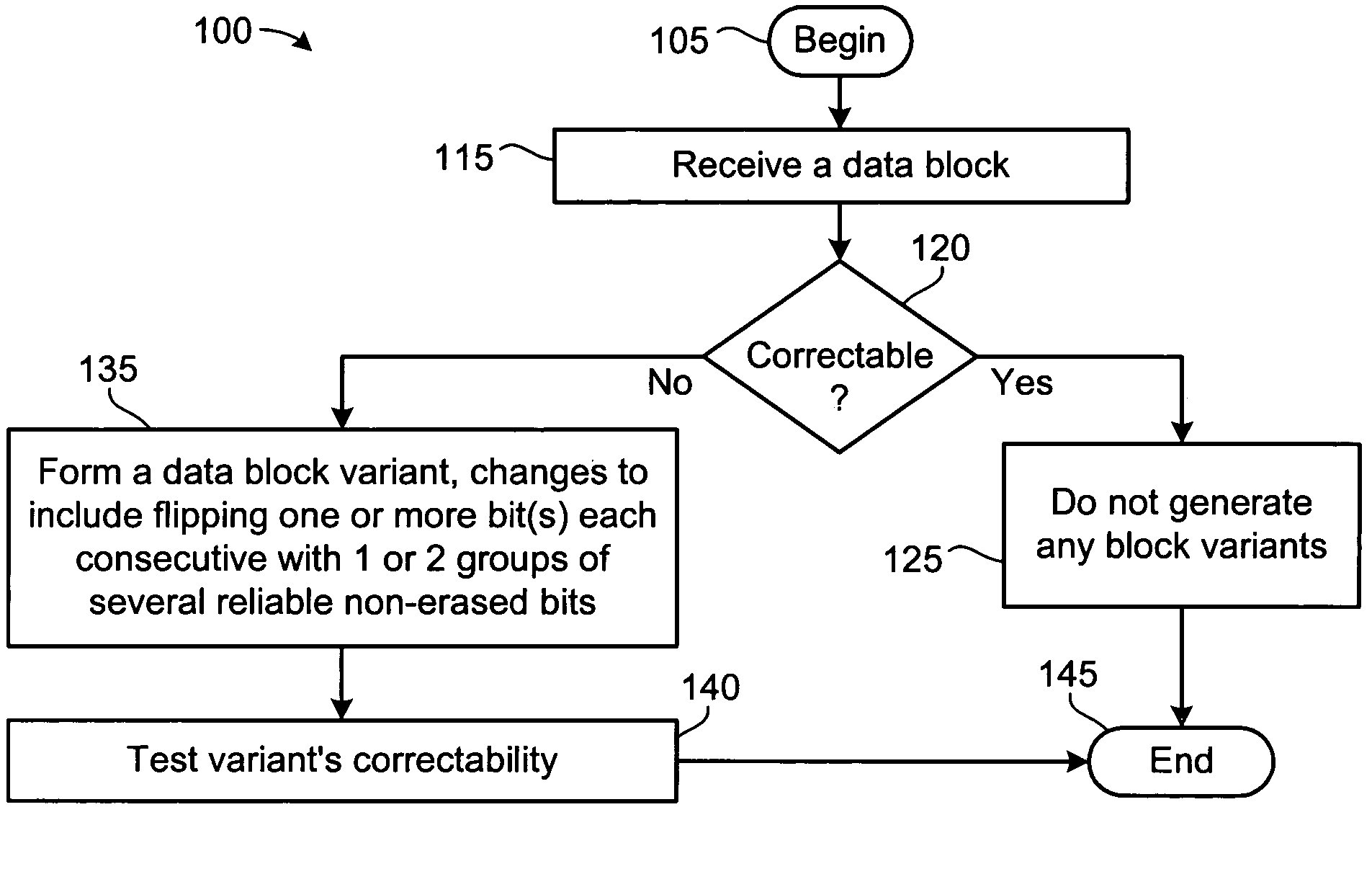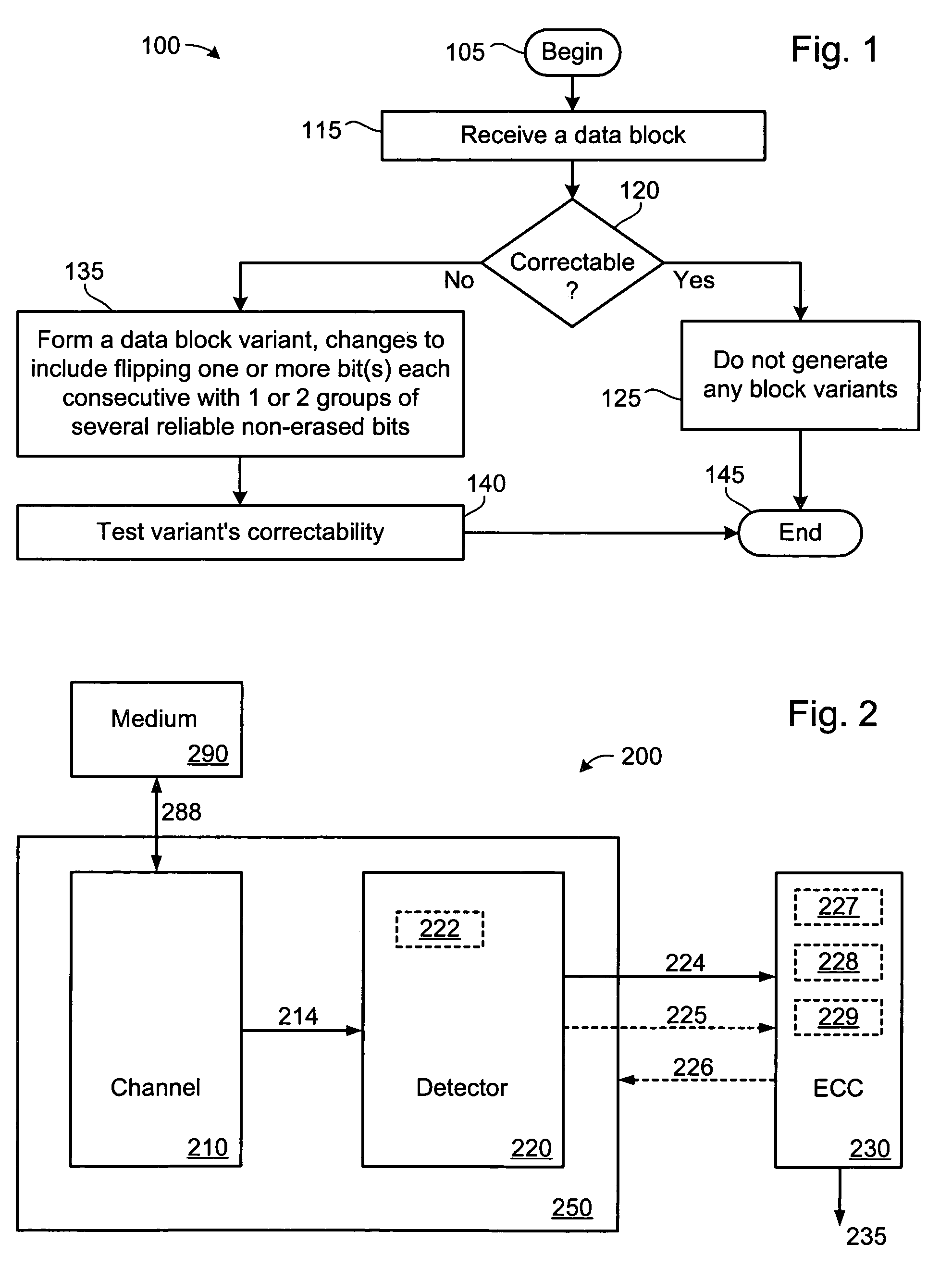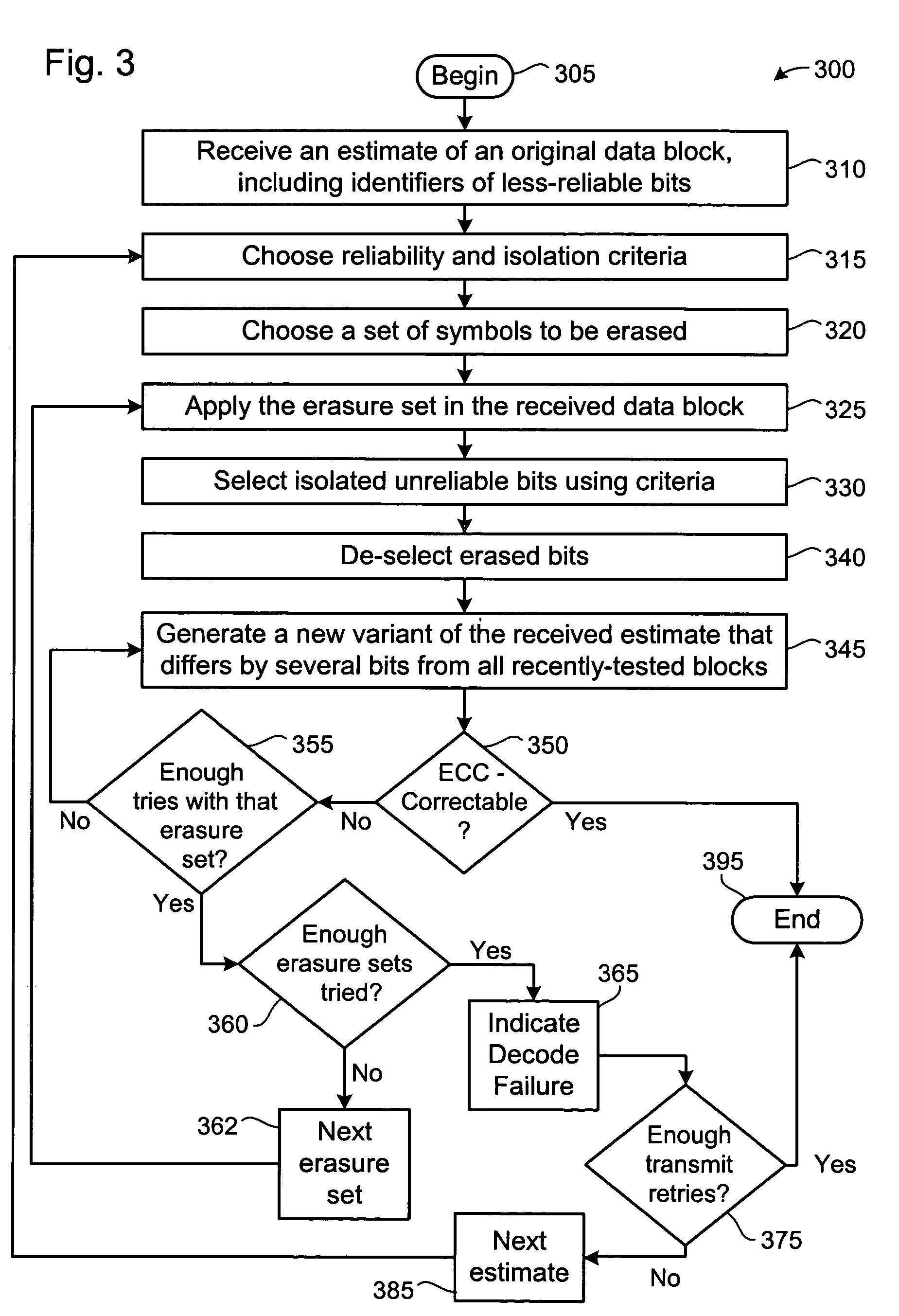Soft-decision decoding using selective bit flipping
a selective bit flipping and soft-decision technology, applied in the field of system for correcting data block errors, can solve problems such as correct symbols rather than bits, conventional reed-solomon ecc and similar schemes, and achieve the effects of saving system resources, enhancing the likelihood of block correction, and improving the use of quality information
- Summary
- Abstract
- Description
- Claims
- Application Information
AI Technical Summary
Benefits of technology
Problems solved by technology
Method used
Image
Examples
first embodiment
[0050]Alternatively characterized, the present invention is a method (such as 100,300) comprising a step of performing a variant correctability test (such as 140,350) upon a data block variant formed from a received data block by a variation process that includes flipping a selected, potentially bad bit (such as 831) that is consecutive with several potentially good bits of the received block. The variant correctability test is optionally repeated several times (such as by step 355) before receiving another data block, each repetition using a different block variant (such as by step 345). Optionally another block is subsequently received (such as by step 385), each of the received data blocks being an estimate of one original data block.
second embodiment
[0051]In a second embodiment, the performing step is done so that the data block variant includes at least 1-2 erased symbol(s) and so that the erased symbol(s) do not contain any flipped bits (such as by step 340). All of the symbols have N bits, and each flipped bit is preferably selected as a potentially bad bit isolated enough so that the other N-1 bits are all reliable, in the symbol that contains the flipped bit.
third embodiment
[0052]In a third embodiment, an original data block is first sent into a storage or transmission medium (such as 290) where degradation can occur. The received data block is later derived from this original data block. During the decode operation, a control block (such as 230) performs the flip-bit selection based at least partly on an arithmetic combination of scalar evaluations of each of the several potentially good bits (such as by step 330 implementing any of FIGS. 4-8).
[0053]A fourth alternative embodiment of the present invention is a method including at least four steps. The first step is determining whether to perform a variant correctability test upon a data block variant primarily based on whether a received data block is correctable (such as by step 120). The second step is selecting at least partly based on at least first, second, and third non-overlapping bit reliability categories so that the first category includes many selected bits, so that the second category incl...
PUM
 Login to View More
Login to View More Abstract
Description
Claims
Application Information
 Login to View More
Login to View More - R&D
- Intellectual Property
- Life Sciences
- Materials
- Tech Scout
- Unparalleled Data Quality
- Higher Quality Content
- 60% Fewer Hallucinations
Browse by: Latest US Patents, China's latest patents, Technical Efficacy Thesaurus, Application Domain, Technology Topic, Popular Technical Reports.
© 2025 PatSnap. All rights reserved.Legal|Privacy policy|Modern Slavery Act Transparency Statement|Sitemap|About US| Contact US: help@patsnap.com



